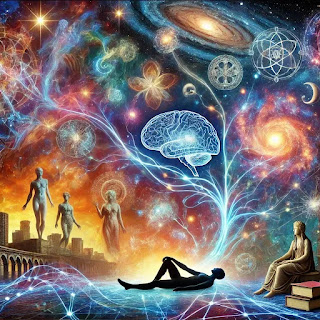Impact of Drawing or Painting on various aspects of our life!
The habit of drawing or painting can have a significant impact on various aspects of life, influencing both mental and emotional well-being as well as behavior. Here are some ways it can affect life:
1. Emotional Expression and Stress Relief
Therapeutic Outlet: Drawing and painting provide a non-verbal way to express emotions, which can be especially helpful for people who find it difficult to articulate their feelings. It serves as a form of emotional release.
Stress Reduction: The creative process can be meditative, allowing individuals to focus on the present moment, which helps reduce anxiety and stress.
2. Improved Patience and Focus
Enhancing Patience: The process of completing a detailed drawing or painting can take time, teaching the artist to be more patient and persistent.
Focus and Concentration: Art requires a high level of attention to detail, fostering a habit of concentration that can carry over into other areas of life.
3. Cognitive Development and Problem-Solving
Boosts Creativity: Drawing and painting stimulate the brain’s creative centers, encouraging individuals to think outside the box. This creativity can enhance problem-solving skills in both personal and professional life.
Improved Memory: Engaging in artistic activities, especially those that involve creating detailed images, can strengthen visual memory and recall.
4. Self-Esteem and Confidence
Building Confidence: Completing a piece of art can bring a sense of achievement, boosting self-esteem. Over time, as skills improve, the individual may gain more confidence in their abilities.
Sense of Identity: Creating art allows individuals to express their unique perspectives, fostering a sense of self-identity and individuality.
5. Behavioral Changes
Calming Effect: Engaging in creative activities can help calm impulsive behaviors, making individuals more thoughtful and deliberate in their actions.
Improved Emotional Regulation: Art helps people process and regulate their emotions, leading to more balanced reactions in daily situations.
6. Social and Communication Skills
Social Interaction: Sharing art with others, joining art communities, or even discussing art can lead to improved social skills, providing a common ground for communication.
Non-verbal Communication: For people who are more introverted, art can act as a bridge for expressing thoughts and feelings without the need for words.
7. Mindfulness and Mental Clarity
Promotes Mindfulness: Engaging in art can lead to a flow state where the individual becomes fully absorbed in the activity, promoting mindfulness and mental clarity.
Mental Health Benefits: Numerous studies have shown that art can help alleviate symptoms of depression and anxiety by providing a positive outlet for emotions and fostering a sense of purpose.
8. Adaptability & Open-Mindedness
Handling Mistakes: In art, mistakes are often turned into part of the creative process. This adaptability can teach individuals how to handle challenges and setbacks more effectively in other areas of life.
Willingness to Experiment: Regular engagement with drawing and painting encourages an open-minded attitude, as individuals become more comfortable with experimenting and taking creative risks.
Overall, the habit of drawing or painting fosters emotional resilience, cognitive growth, and behavioral improvements, enriching both personal and social life.
Drawings Courtesy: Rafiath Rayes





Comments